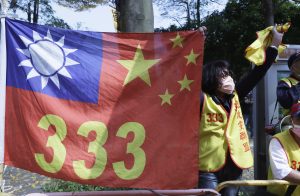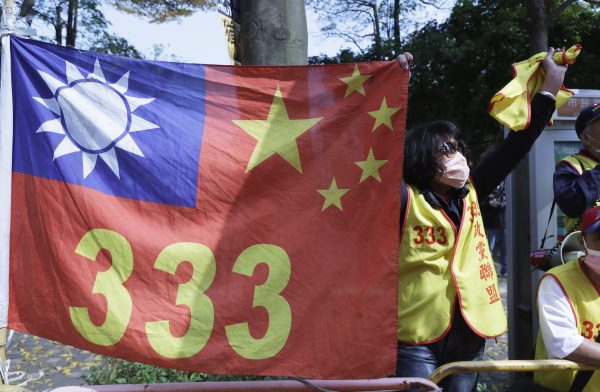Magazine
China’s foreign information manipulation and interference targeting Taiwan has been ongoing for decades. Here’s a look at its latest evolution.

A pro-China protester shouts slogans outside of the hotel where former U.S. Secretary of State Mike Pompeo will deliver a speech in Taipei, Taiwan, March 4, 2022.
Credit: AP Photo/Chiang Ying-ying
On January 13, 2024, Taiwan will once again elect a president according to the country’s own constitution. Once again, Taiwan’s democracy will operate despite pressure from the People’s Republic of China (PRC).
For decades, China has engaged in foreign information manipulation and interference (FIMI) targeting Taiwan, and has optimized its tactics, techniques, and procedures, with the ultimate goal of annexing Taiwan. Beijing’s sustained, long-term FIMI campaigns affect the context of every election in Taiwan, and particularly presidential elections, where cross-strait issues dominate voter concerns.
FIMI efforts sustained over such a long timescale provide abundant opportunities for learning from trial and error. At Doublethink Lab, we have been observing and analyzing PRC FIMI targeting Taiwan for the last five years. Our observations to date suggest an evolution in tactics that appear to optimize the role of the different actors in China’s FIMI apparatus, leading to reduced risks and costs associated with attribution, while increasing effectiveness and driving societal polarization. These tactical evolutions are likely driven by the failure of China’s efforts to decrease resistance to, and increase support for, their desired annexation of Taiwan. Instead, efforts are shifting to attack the functioning of Taiwan’s democracy.
China has interfered in many democracies globally, and its tactics in those efforts also continue to evolve, causing growing international concern. In October 2023, Canada’s Rapid Response Mechanism attributed direct attacks on MPs through Facebook to “Spamouflage,” a well known network spamming over 50 social media platforms with disinformation and propaganda that has been attributed to PRC law enforcement. Microsoft Threat Intelligence identified PRC actors impersonating U.S. voters, copying Russia’s tactics, and using machine learning generated images, leading to higher levels of authentic engagement than less sophisticated previous campaigns.
China’s FIMI has been iterating not only over a long timescale, but across a broad geographic scope, multiplying opportunities for optimization. It is now a problem that all democracies are facing. Although strategic contexts differ, paying attention to developments in Taiwan, which has been called a “laboratory” for China’s FIMI, should provide productive insights for other countries.
Beijing’s interference in Taiwan’s democratic processes must first be understood as sustained psychological warfare and manipulation of the information space over decades. Psychological warfare has been persecuted through FIMI with the aims of weakening resistance to, and building support for, annexation. These efforts are supported by manipulating Taiwan’s information environment itself, including influencing traditional media, cultivation of local proxies, and collaboration with influencers.

